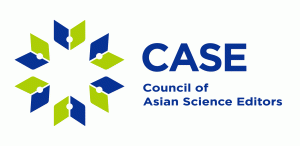Diversity and bioactivity potential of fungi isolated from deep-sea hydrothermal vents and an oxygen minimum zone in the southern Gulf of California
Diversity and bioactivity potential of fungi isolated from deep-sea hydrothermal vents and an oxygen minimum zone in the southern Gulf of California
Patricia Velez1*, Mario Figueroa2, Abril Hernandez-Monroy1, Alejandra Arista-Romero2, Marian A. López-Lobato2, Laura Espinosa-Asuar3, Diana L. Salcedo1, Luis A. Soto4
1Departamento de Botanica, Instituto de Biologia, Universidad Nacional Autonoma de Mexico, Mexico City, Mexico
2Departamento de Farmacia, Facultad de Química, Universidad Nacional Autonoma de Mexico, Mexico City, Mexico
3Instituto de Ecologia, Universidad Nacional Autonoma de Mexico, Mexico City, Mexico
4Instituto de Ciencias del Mar y Limnología, Universidad Nacional Autónoma de México, Mexico City, Mexico
*Email: pvelez@ib.unam.mx
Hydrothermal vents (HV) are chemosynthetic based extreme ecosystems generated by fissures on the seabed discharging geothermally heated water, whereas oxygen minimum zones (OMZ) occur in poor-circulation areas of high primary production, where oxygen concentrations drop <0.7 mg O2/l. These two unique ecosystems harbor unexplored fungal communities that represent one of the richest, yet mostly unexploited sources of bioactive molecules. Few studies have assessed fungal cultivable diversity in HV and OMZ despite their relevance in natural product discovery. Herein, we analyzed the cultivable fungal diversity isolated from superficial sediments in deep-sea HV (Pescadero Basin, Pescadero Transform Fault, and Alarcón Rise) and an OMZ (Alfonso Basin), and assessed their biotechnological potential. Fungi were isolated from sediment cores, and genomic DNA was extracted from the hyphae. Two primer sets were used for PCR amplification and sequencing: the internal transcribed spacers and the beta-tubulin gene. Organic extracts from the isolates were obtained and analyzed by ultraperformance liquid chromatography-photodiode array-high-resolution tandem high-resolution mass spectrometry. Lastly, extracts and fractions were tested for antimicrobial activity using a microplate serial dilution method against a set of pathogenic, drug-resistant microorganisms. We isolated 32 microfungi clustered within 21 OTUs of the Ascomycota. These organisms produced several metabolites with the following biological activities: antimicrobial, cytotoxicity (against human leukemia, breast cancer, colon carcinoma, hepatocellular carcinoma, malignant melanoma), analgesic and antioxidant. Directed antimicrobial activity results exposed that most of the extracts possess a remarkable bioactivity at 200 µg/mL and 20 µg/mL, confirming their relevance in natural product discovery.
